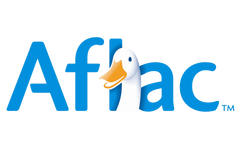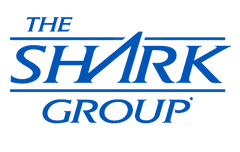 My talk with Dave and Randy from Bombas was so interesting, the entire conversation could not fit into just one post. This is part 1 of the 3 part interview series with Bombas, and the remaining 2 parts will be posted over the next 3 weeks, on Saturdays.
My talk with Dave and Randy from Bombas was so interesting, the entire conversation could not fit into just one post. This is part 1 of the 3 part interview series with Bombas, and the remaining 2 parts will be posted over the next 3 weeks, on Saturdays.
Changing the world one sock at a time, Dave and Randy from Bombas are among my favorite Shark Tank investments and people in general for more reasons than one. From idea to conception, Bombas has utilized “the power of broke” not only to help build their brand, but more importantly, to help those in need. Here is an exclusive look at my interview with the CEO and Co-Founder, Dave, and the Chief Brand Officer and Co-Founder, Randy, about Bombas and their own “power of broke” story.
- - -
Bombas' Beginnings
Daymond: Let’s jump into it! How did the idea for Bombas start?
David: Randy and I, we met at a media company where Randy was the sixth employee, I was the seventh. We started about a month apart from each other and we became fast friends on a number of levels, one of them being our shared passion for entrepreneurship. We worked together for six years and over that period of time, we would always kind of throw ideas around, and talk about the future of one day starting a company together. I was responsible for managing business development and growing our email list and our social reach, while Randy oversaw our editorial team.
I saw this press release that Hanes and Salvation Army released, and within that article was a quote from the Salvation Army stating that while most people don't realize it, socks are actually the number one most requested clothing item in homeless shelters. I shared that with Randy and we both were kind of blown away, taken aback that something seemingly meaningless in most people's daily lives could be such an important part of others’. You wake up, put on your socks and shoes, walk out of the house and don't really even think about it.
At first, we thought about how we could solve this problem. We could go out and buy some socks and donate them, but that didn't really seem efficient from a scalability standpoint. Then we started to think about—this is in early 2011—the growth of TOMS and the give-back business model. They were in their fifth year of business, and Warby Parker had just launched. We were like, "Oh, wow, this give-back movement, maybe this could be the key to solving this issue on a larger scale." And we started developing the idea more from there.
We looked at the marketplace, and said, "If we want to donate a lot of socks, we're going to need to sell a lot of socks." In order to sell a lot of socks, we knew we had to create a really great product, something that in tandem with the mission would be unstoppable. We looked at dress socks and felt like there was a lot already happening around funky dress socks for men. Around that time, it started to become a trend. So we decided to turn our attention to the athletic market at first. What we realized was that there was a lot of complacency in the mass market athletic sock category.
Socks, for the most part, were black, white, and gray. There's this huge divide between your cheap, mass marketed, multi-pack, commoditized product, and then the leap up to individual, premium price products. On the lower end, socks are starting at anywhere from a buck to going up to three or four dollars a pair. On the high end of the market, you have a lot of socks that started in the premium category, started at $15, a lot in the $18 range, and onwards up to $35. We started looking at all of those products in the higher-end category and tried to understand what differentiated them from the lower-end product. We started pulling out key features that we felt made a really huge difference in the daily comfort and overall performance of athletic socks.
What we also noticed was that at higher-end segments, socks were really being marketed endemically towards niche athletics. You'd have a running sock, a cycling sock, a basketball sock, a soccer sock. None of those products are really being marketed toward just the casual athlete, or the person who is just looking for a better performing sock that they could wear equally with a pair of jeans and sneakers, and then also wear them in the gym. We spent two years on product development, came up with seven features that we felt like made a huge improvement on the mass market athletic socks, combined with our give-back mission and decided to launch the product on IndieGoGo. The rest is history.
Randy: Just to add something there, we didn't grow up dreaming to be in the sock business. When we became friends, we realized that the things that we had in common: the shared interest in entrepreneurship, doing something where we could make a difference in our community, and this opportunity. The more we thought about it, the more excited we got. The more we thought about socks, the more we realized that we could make a difference in a product that most people don't even consider. What we realized was that there was a need for it for the consumer, and also for those who are homeless, in-need or at risk – and it all kind of came together from there.
Their Roots in Social Entrepreneurship
Daymond: You guys talk about making a difference. Like you said, you never thought you'd be in the sock business, but you wanted to help people. How important is social entrepreneurship? Do you feel that social entrepreneurs have a leg up on entrepreneurs that are doing things strictly from a for-profit business model?
Randy: I don't know if it's necessarily a leg up, but for us, we couldn't separate our mission from our business. Bombas wouldn't exist without the mission. We don't think of it as a specific way of doing things; it's just the way we built the company. It’s engrained in Bombas. It's in our DNA. It's something that we've considered carefully since the beginning. It's built into our unit economics, our fiscal model, the way we run our company, the culture, the way we look at the world, and the people that we hire.
It's not something that we can separate. Say, "If we didn't have this aspect of it, what would our company look like?" It wouldn't be Bombas. We know that, that comes in companies of all shapes and sizes. We're kind of cheerleaders in that regard. We're happy to talk to other companies and help them figure out a way to make a positive impact in addition to being for-profit. Although we have charitable aspects, deep at the core of our company, we are ultimately a for-profit business, not a charity. I think uplifting other companies is a positive thing—the more the merrier.
David: I would say that everything Randy has said is a hundred percent accurate. Building on that, we certainly have seen the benefits of having a charitable mission tied to our brand in a number of ways. I think the most impactful thing that we will continue to see is that it's something people talk about. I think especially with a category like socks, it's not common that I think people sit around the dinner table and go, "You should check out these comfortable socks” or “Go buy some of these comfortable socks." It's not really something that comes up in conversation a lot, whereas I think people learn about what we do, and then they experience the product and they experience the brand.
They're like, "Wow, I now have something more to talk about than just simply saying, 'These are fun, colorful, comfortable socks.'" No, this is a company that is actually giving back and making a difference in our community, which I think people love to talk about. It's one of the reasons why we've been able to work with brands like The Gap and Flywheel and some other bigger brands. Without the charitable mission, I don't know that we would have garnered the same level of attention that we would have without it.
The Gap to 1,000,000
Daymond: You mentioned The Gap. Will you explain briefly what your campaign with the Gap was about?
David: Sure. The Gap learned about what we were doing, they had a holiday initiative to try to work with give-back companies to make an impact on the community and convey that to their customers that they're aware of this they understand the importance of this. I guess we got on their radar. They ended up contacting us, we had a couple initial conversations. What started out as a small conversation, a small campaign around producing some co-branded socks for them, turned into something much bigger.
But as conversations continued, they ended up being so, I don't know if it was amazed, but intrigued and involved in what we were doing from a giving aspect, that they decided to blow out the campaign and make it a global campaign that was in all of their stores. They committed to donating a million pairs of socks as a part of our working together.
Daymond: That's fantastic.
Randy: Not only a million pair of socks, but Gap committed to donating a million pairs of our donation socks for the holiday season. That aspect alone, for us, was a monumental moment for us as company - where based on an attraction to the quality of the product we created, and the mission, this big company wanted to work with us. They came along and we were able to have a huge impact in our second year and work together to donate a million pair of socks. We're thankful to The Gap for that opportunity, and for the vision they had, to see the importance of it, to sort of partner with a company that's a blip on the radar compared to the size of The Gap. For now.
Daymond: For now. I love that.
The Sock They Give
Daymond: One of my favorite aspects about the socks that you give are that you designed them to be the best socks for the homeless. They are a carefully designed to be as beneficial to the homeless as possible. I think that's fantastic, Can you take me through the process of constructing this sock and what features it has that maybe a regular sock doesn’t?
Randy: We worked with our giving partners and shelters, to help develop those socks based on the needs of people who are living on the streets and might not have a change of socks every day. We designed them with an anti-microbial treatment to deter the growth of odor and fungus, darker colors for less visible wear, and reinforced seams for greater durability. Same quality socks as those we sell, but with a few updates geared towards those we are giving them to through our donations. It’s something that has meant a lot to us, and I think goes a long way with our charity partners and the people who receive them.
Outside of our partnership with GAP, we just announced that we’ve donated our millionth pair of socks on our own. It was a milestone we didn’t anticipate hitting until 10 years into our business, and instead just passed in 2.5 years.
















